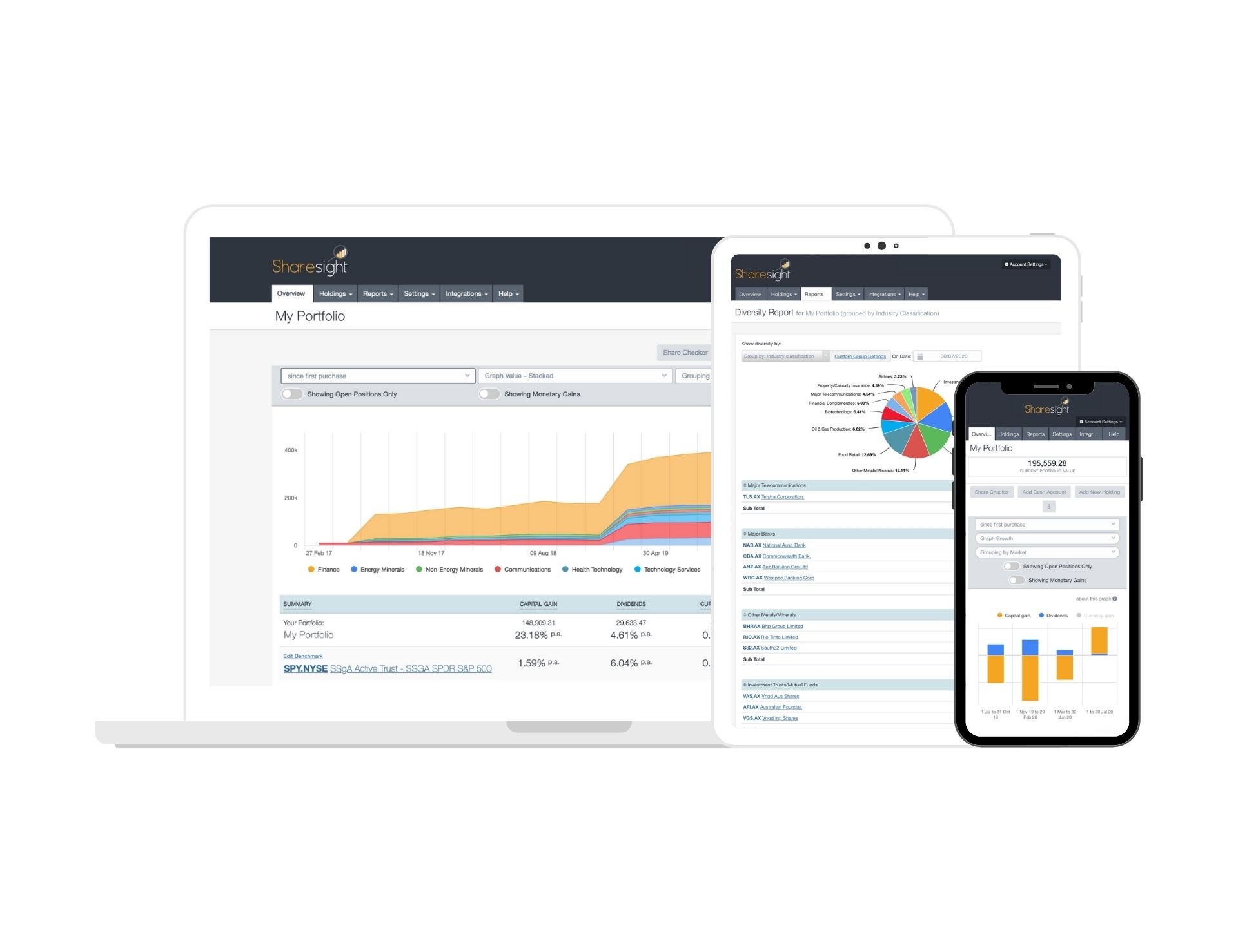How to evaluate a stock
Investing in share markets may be easier than ever before but evaluating which shares to buy still takes some skill. Some investors are happy taking stock tips from friends, some follow the recommendations of professional money managers and still others use ratings from research providers like Morningstar. Whatever the methodology, stock analysis and company research will inevitably throw up some terms and concepts that investors should be familiar with.

What to consider when choosing to invest in shares
It is important to remember that selecting shares should be done as part of a broad strategy, often to build a diverse portfolio that aims to achieve specific investment goals. Investors should begin this journey by assessing their appetite for risk as this will determine the sort of companies, sectors and countries they invest in. It is also worth considering whether the investor aims to earn a regular income from dividends, chasing capital growth over the long term or a combination of the two.
Buying shares in a company means becoming a part owner, so investors should take the time to research the business and understand the sector it operates in. This includes both assessing the company’s management and track record and considering macroeconomic factors that could affect the business, like exchange rates, disruption / competition and changes to government legislation.
Common metrics to evaluate shares
Valuation ratios are a common metric and are crucial to determining a company’s worth, with several in widespread use. These can be useful tools in helping investors assess the value of a company, compare different companies and sectors or evaluate investment potential on a specific metric. Four common terms and associated ratios are:
Earnings per share
Earnings per share (EPS) is a company's net profit divided by the number of common shares it has outstanding. It is considered one of the most important methods of share price analysis as EPS indicates a company's profitability. The higher a company's EPS, the more profitable it is considered and companies that have a track record of growing their EPS each year are highly regarded. It is a useful exercise for investors to ascertain whether the EPS of a company they are considering investing in has been growing or falling and then try to work out the reason for this. EPS not only offers a quick insight into a company’s earnings growth from one year to the next but also gives a clear picture of earnings relative to dividends, as these are also expressed on a per share basis.
Price-to-earnings ratio
Price-to-earnings ratio (P/E) looks at the relationship between a company's stock price and its earnings, giving investors a good idea of what the market is willing to pay for the company's potential earnings. The ratio is determined by dividing the company's current share price by its earnings per share. A high P/E number generally suggests investors see high growth potential whereas a low ratio suggests the opposite. However, earnings can be hard to predict as past earnings don't guarantee future earnings and analysts' expectations can miss the mark. Experts mainly use P/E ratios to compare companies within the same industry or sector and it is not considered a reliable standalone metric.
Net Tangible Assets
Net tangible assets can be a useful metric for evaluating a company’s future profitability, especially in capital intensive industries. To arrive at this number, one takes the total assets of a company – property, plant, and equipment – and subtract total liabilities –goodwill, patents and trademarks. Tangible is included in the definition of the asset to indicate that not every asset is valued equally at all times. To calculate a company's net tangible asset per share of common stock, the investor divides the net tangible assets figure by the number of shares of common stock outstanding. This metric allows investors to focus on a company's physical assets in isolation.
Price-to-book ratio
Price-to-book ratio (P/B) gives an indicator of how fairly priced – cheap or expensive – a share is at any given time. It is calculated by taking the current price per share and dividing by the book value per share. The book value of a company is a more conservative view of its value, as it simply looks at the difference between the balance sheet assets and balance sheet liabilities. This gives a good indication of what investors are willing to pay for each dollar of a company's net value. The P/B ratio is of particular interest to value investors who like to invest in companies with a market value less than its book value with the expectation that the market perception will turn out to be wrong.
Common investment frameworks
There are many methods for investors to consider when taking a view on a sector or analysing a specific company. These might be to consider the threat of competitors or new entrants, especially in industries vulnerable to disruption; the bargaining power of buyers or suppliers; and whether a product or service is curtailed or enhanced by the COVID-19 pandemic. Other frameworks include the three Cs (Company, Competitors, Customers); the four Ps (Product, Price, Promotion, Placement); and SWOT analysis (Strengths, Weaknesses, Opportunities, Threats).
It is also useful to keep asking and answering a set of generic questions as part of the analysis. Including:
-
How does the company make money?
-
Does this company have a competitive advantage?
-
How good is the management team?
-
What could go wrong?
Company reports, news and broker research
Companies issue annual reports and financial statements detailing their activities throughout the year and these are a good place to start sourcing information. By reviewing a company’s balance sheet, its sources of income and how it handles its cash, revenues and expenses, one can form a view of how it is being managed and run. This also allows for comparison with other companies in the same industry, sector or region.
And while there are endless metrics and ratios investors can use to assess a company’s general financial health and calculate its intrinsic value, looking at revenue or income from a single year or the management team’s most recent decisions paints an incomplete picture. Broker reports can help with historical data, offer a well-informed narrative about the company and add some context to its decision-making. This detail can offer investors insight into the company’s resilience, reactions to challenges and ability to improve its performance and deliver shareholder value over time.
Finally, it’s important to keep up with current market events and reassess investments regularly. Reading financial news media, and listening to investment podcasts are all invaluable in this process.
Evaluate your stocks with Sharesight
Thousands of investors worldwide are using Sharesight to track the performance of their stock portfolio and make better, more informed investment decisions. If you’re not already using Sharesight, what are you waiting for? Sign up for Sharesight so you can:
-
Track all of your investments in one place, including stocks, ETFs, mutual/managed funds, property and even cryptocurrency
-
Automatically track your dividend and distribution income from stocks, ETFs and mutual/managed funds
-
Run powerful reports built for investors, including Performance, Portfolio Diversity, Contribution Analysis, Multi-Period and Multi-Currency Valuation
-
Easily share access of your portfolio with family members, your accountant or other financial professionals so they can see the same picture of your investments as you do
Sign up for a FREE Sharesight account and get started tracking your investment performance (and tax) today.

Disclaimer: The above article is for informational purposes only and does not constitute a specific product recommendation, or taxation or financial advice and should not be relied upon as such. While we use reasonable endeavours to keep the information up-to-date, we make no representation that any information is accurate or up-to-date. If you choose to make use of the content in this article, you do so at your own risk. To the extent permitted by law, we do not assume any responsibility or liability arising from or connected with your use or reliance on the content on our site. Please check with your adviser or accountant to obtain the correct advice for your situation.
FURTHER READING

Every feature Sharesight released in 2025
In case you missed any of our monthly updates, here’s a full recap of all the new Sharesight features and improvements released in 2025.

Sharesight product updates – December 2025
This month's key focus was on the launch of the Tasks tab, an improved Overview page, and additional support for 20,000+ bonds on the LSE.

Sharesight's top 10 investing blogs of 2025
We look back on your favourite Sharesight blogs, from Sharesight feature explainers to users' favourite brokers, a compilation of world's best blogs and more.